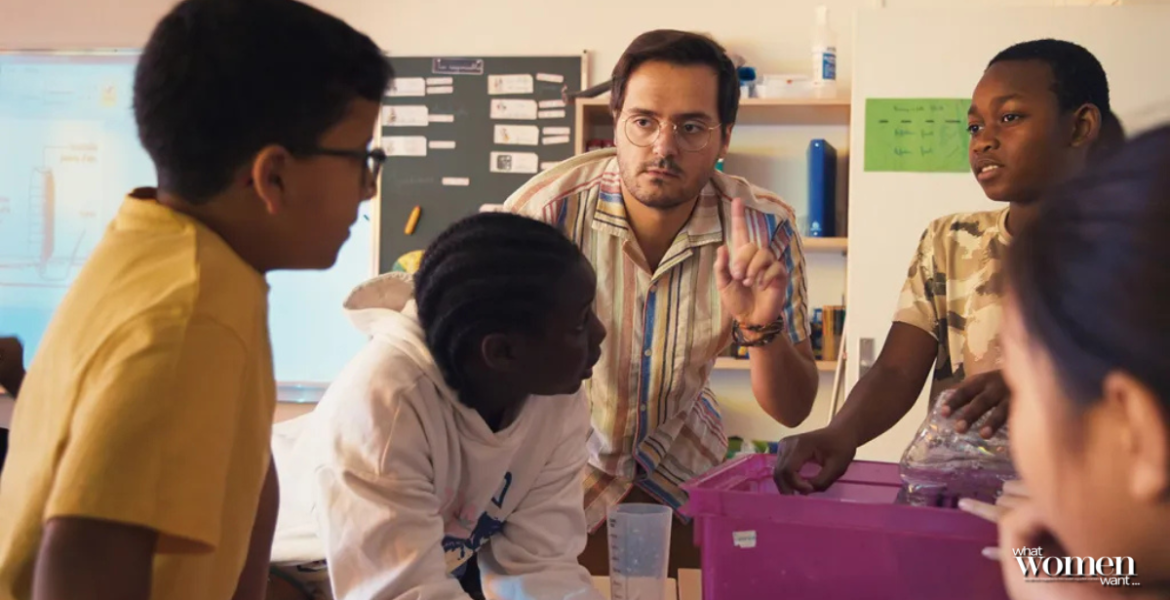In “Elementary,” Claire Simon invites viewers into Makarenko Public Elementary School in Ivry-sur-Seine, a suburb just outside Paris. With her observational style, Simon paints a portrait of childhood, education, and the intricate social dynamics of the playground.
The documentary truly reflects the incredibly formative and intricate elementary school years. Simon positions the camera at the children’s eye level, capturing their true emotion. The film’s fly-on-the-wall approach allows the children’s interactions and the teachers’ guidance to unfold organically, fostering an intimate connection with the students. In fact, it also enables viewers to reflect on the broader implications of public education.
The film follows the school year, from classroom lessons to playground activities, highlighting the roles teachers assume as educators and caregivers. It spotlights how teachers navigate the complexities of each child’s background and needs. For example, in the opening scene, a teacher reassures a concerned parent about supplies.
“Elementary” also shines a light on the socio-political landscape of Ivry-sur-Seine, a community with deep-rooted immigrant populations. While the film does not overtly politicize the educational experience, it offers a mirror to contemporary societal issues. Particularly, it focuses on the challenges of inclusion and diversity within public schools. A notable scene involves a spirited classroom debate about religion among Muslim students—an exploration that could have benefited from further development but nevertheless sparks critical conversations about faith and identity in a multicultural society.
The film resonates deeply with audiences familiar with the systemic challenges facing education in France and other countries as well. Simon’s lens captures the joyful chaos of childhood while also addressing the harsher realities of social hierarchies among classmates. The playground represents these dynamics, where moments of camaraderie are intertwined with the inevitable cruelties of youth.
The film’s aesthetic is one of simplicity and intimacy. Simon’s decision not to include voiceover or scripted commentary enables the raw emotions and interactions of the students to take center stage. As viewers, we are not simply spectators but participants in the unfolding narrative of learning and growth.
Ultimately, “Elementary” is a deeply resonant work that celebrates both students and teachers. Through her lens, Claire Simon reminds us of the transformative power of education and highlights its role in shaping young lives amidst a complex and often unforgiving world.

